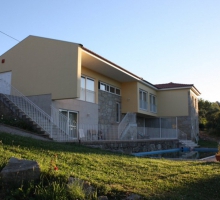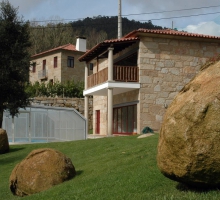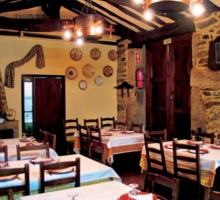The alveolus of Moldes is the main focus of the panoramic observed through the Côto do Boi. This shell-shaped alveolus is developed in a depressed zone of the quartzdiorite of Arouca, being drained by the Moldes stream, a tributary of the Paiva river – Douro’s river basin. The central region of the Moldes parish is established in the base of this alveolus, and the Espinho, Chão de Espinho, Bustelo, Adaúfe and Espinheiro villages are in its slopes. The Côto do Boi designates, according to the popular wisdom and the morphology of this local, the back of an ox without tail. This tergum marked on the landscape is drained by the Côto do Boi stream, which is an important canyoning course of the Arouca Geopark, and by the Roças stream, both tributaries of the Moldes stream that drains the entire homonymous alveolus. To north and in the alignment of the regional road Arouca-S. Pedro do Sul (ER326), the lithological contact is defined among the early Ordovician metasediments that we find in the top of the Côto do Boi and the quartzdiorite of Arouca. In this geosite, it is also important to refer the andalusite minerals, of great dimension, that occur in the metasedimentary rocks masking its schistosity. The andalusites are aluminum silicates (Al2SiO5), sillimanite and kyanite polymorphs. These are considered index minerals, as they define at what pressure and temperature the metamorphic rock was formed.
Location: Arouca
Location: Arouca




